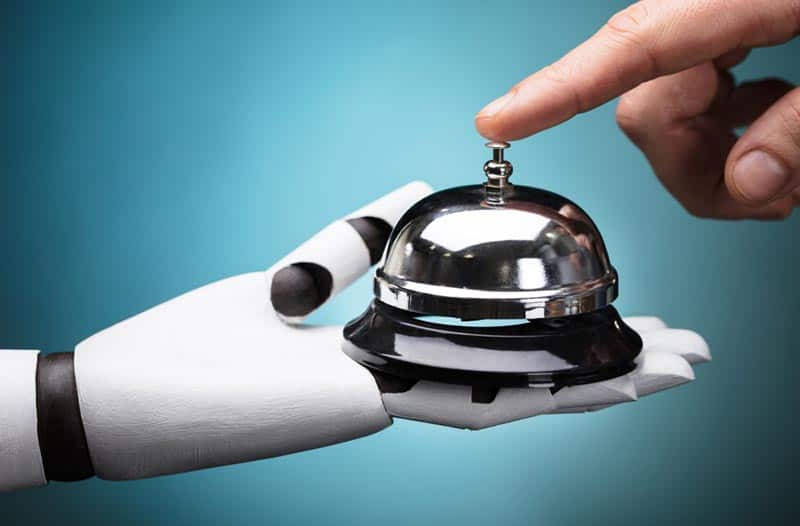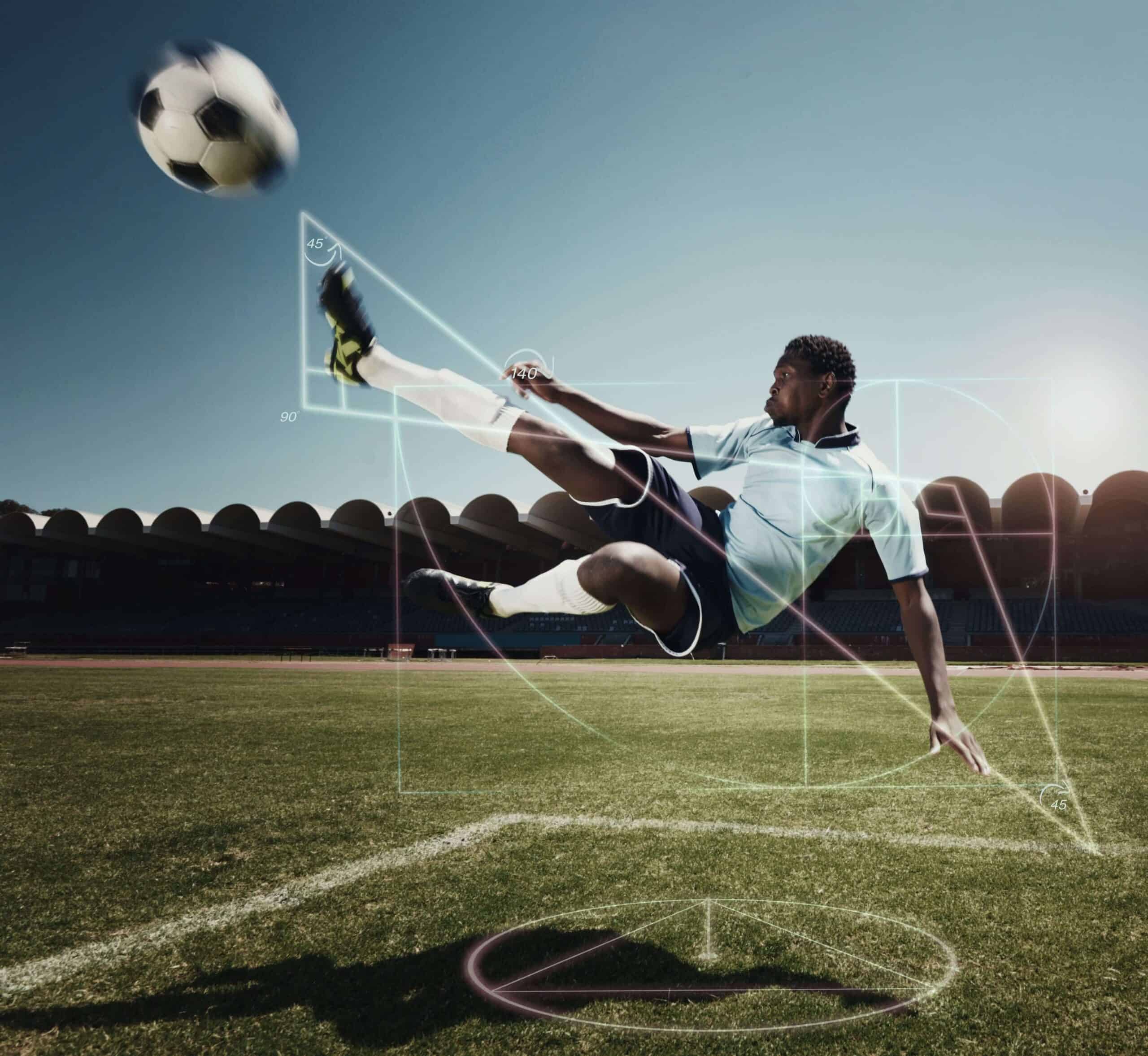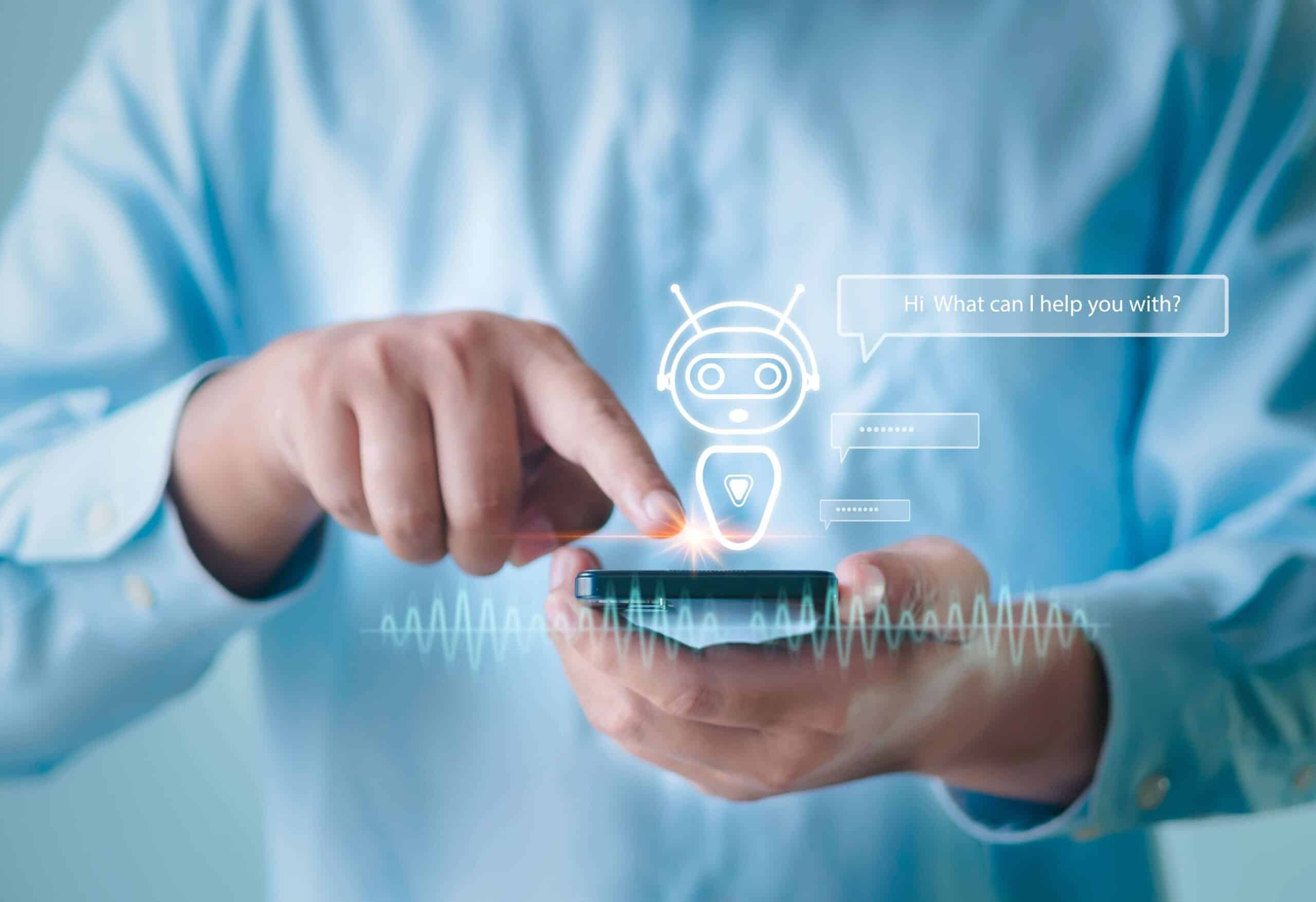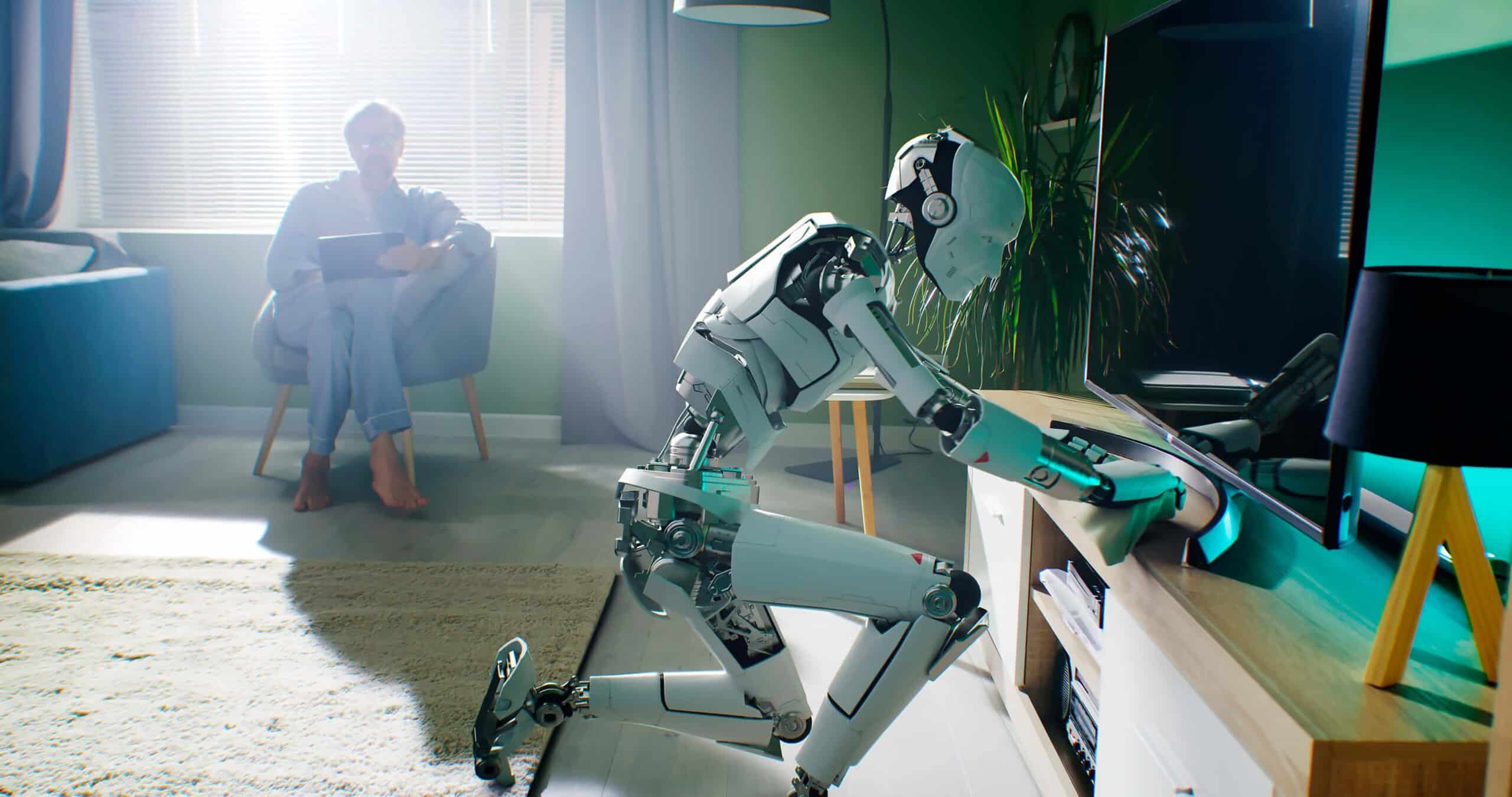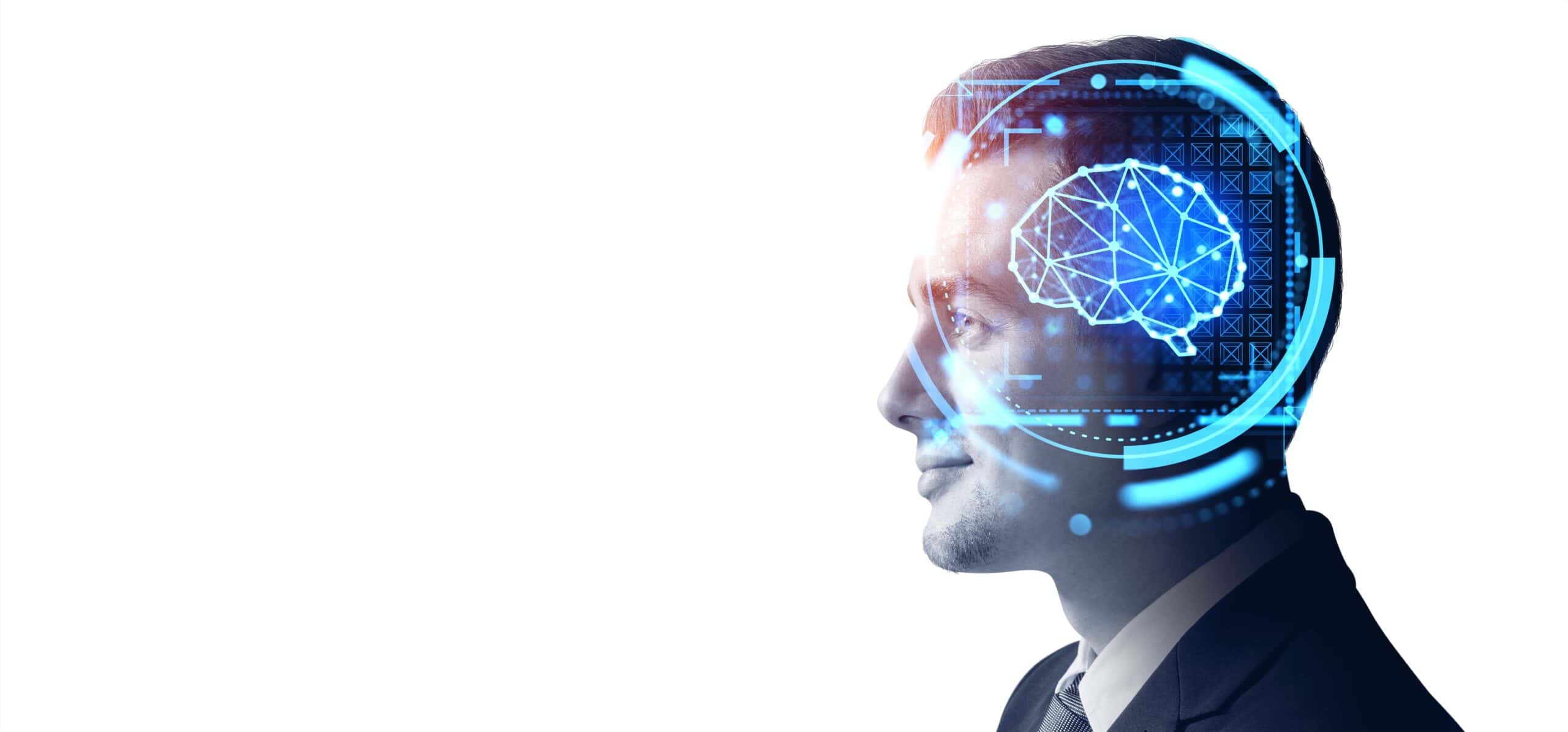- Futuristic restaurant in India features robot waiters
- Robotic bartender serves drinks in a newly opened bar in Prague
- Robot-barista can make 100 cups of coffee in an hour
- Denver drive-through uses AI to take customer orders
- AI Bar uses facial recognition to let bartenders know who’s next in line
- How will technology shape the future of bars and restaurants?
Innovative technologies like artificial intelligence and robotics have had a transformative impact on a wide variety of industries in recent years and you’d be hard-pressed to find an industry in which technology doesn’t play an important role today. With that in mind, it’s not surprising to see a similar tech-driven transformation taking place in bars and restaurants around the world.
In today’s crowded market, it’s becoming increasingly difficult for businesses to stand out from the competition and attract customers. As a result, even bars and restaurants have been forced to adopt emerging technologies like AI and robots, assigning them a growing number of tasks that were once reserved exclusively for humans, such as greeting customers, taking their orders, preparing their food, and pouring their drinks.
Futuristic restaurant in India features robot waiters
Take Robo Kitchen, for instance, a new futuristic restaurant that recently opened in Hyderabad, India. In this restaurant your food is served by robots. Founded by three entrepreneur friends, the restaurant has a team of four blue-and-white robotic waiters named Beauty Serving Robots. Once a meal order is received, a robot picks up the food from the kitchen, and brings it to the table. Once the patrons are done, the robots comes and clears the table.
The restaurant’s menu features a variety of Indian, Tandoor, Chinese, and Thai dishes, with separate kitchens for preparing vegetarian and non-vegetarian food. Each table is equipped with a tablet that allows customers to order the food directly, without having to interact with a waiter. Patrons can also choose to be served by one of the four human waiters, however, should they prefer human interaction.
“The customers are given a tablet which has the menu. Once they select the dishes, the order is sent to the kitchen which is then collected by the robots programmed to carry it to the right table. If people come in their way, they stop immediately due to the sensors located on the body and the tray they carry. So, there is no risk of spillage,” says Manikantha Yadav, one of the co-founders. The robots are powered by a battery, which requires three hours to be fully charged and allows them to operate for up to eight hours.
Robotic bartender serves drinks in a newly opened bar in Prague
Designed by the artist David Cerny and architect Tomas Cisar, the Cyberdog is a new wine bar recently opened by the real estate developer Trigema in Prague, Czech Republic. This unusual-looking, two-story steel structure can accommodate up to 40 customers who can use a smartphone app to order one of seven wines that are available on the menu. However, it’s not the unorthodox design that makes this bar interesting, but the fact that drinks are served by a robotic bartender.
Once a customer orders a drink, an orange robotic arm – safely tucked away behind a caged barricade – picks up a bottle from a nearby cooler box, opens it up, and pours the drink into a glass. The robot can pour up to four glasses at a time, which are then placed on an overhead tray and lowered down to the customer’s table via a mechanical system in the ceiling. The bar also serves food, which, unlike the drinks, is entirely prepared by humans. “I am deeply convinced that in some time, when you will be served in a restaurant by a real person, it will be a terribly expensive restaurant because it will be unique,” says Trigema owner Marcel Soural, who believes robots will soon become a common sight in the service industry.
Robot-barista can make 100 cups of coffee in an hour
The Austin-based company Briggo recently unveiled a new fully automated, robotic brewing machine that could soon make human baristas obsolete. The Coffee Haus, as the machine is named, can make 100 cups of coffee per hour, or as much as four human baristas. Customers can use a smartphone app to order a cup of gourmet coffee made from a blend of organic Latin American beans. They can choose between hot and iced coffee, lattes, cappuccinos, chai, and hot chocolate, while the app also allows them to control the ingredients, flavourings, and temperature. Once their drink is ready, they will be notified via a text message.
According to the company, the machine is particularly suitable for public locations like airports and office buildings. “Imagine you’re coming into the security line at the airport, your flight is coming up, and you know that if you want a coffee, you’re going to stand in a long line,” says Kevin Nater, Briggo’s president and chief executive. “From the security line, you can simply order your cup of coffee and pick it up at the coffee haus and make it to your flight on time.”
As usual, when robotics technology is involved, many are concerned that these robots will take jobs away from human workers. However, Nater doesn’t believe that to be the case here, as food service companies already struggle to find enough workers and are often short on staff. “We don’t think we’re replacing people. We are creating a high-tech retail and marketing business and developing jobs in the process,” he says.
In addition to taking jobs away from human workers, some people claim that replacing baristas with robots robs customers of an important part of the whole experience – human interaction. “A lot of customers really appreciate watching a barista carefully pouring water or steaming the milk or adding a little flourish to their drink,” says Oliver Geib, a 24-year-old barista at Ceremony Coffee Roasters in Annapolis. “The social aspect, the atmosphere and the interaction with the barista is a big part of the experience of drinking coffee.”
https://www.youtube.com/watch?v=aKEYhcUljZk
Denver drive-through uses AI to take customer orders
The Good Times Burgers & Frozen Custard drive-through in Denver recently announced the arrival of a new employee that could significantly improve efficiency and streamline the customer experience – an artificially intelligent voice assistant. Developed by the Colorado-based artificial intelligence (AI) company Valyant AI, the AI-based voice assistant is designed to greet customers arriving at the drive through, take their order, and then send them down the line.
“The system takes a lot of friction out of interactions between customers and employees,” says Rob Carpenter, the chief executive and founder of Valyant AI. “The AI never gets offended, and it will just keep talking to you in a very calm and friendly voice.” In addition to not being affected by emotions and stress, the AI never gets tired, doesn’t need bathroom breaks, and doesn’t require a salary. “By improving ordering accuracy and decreasing wait times, our platform improves the customer service experience and allows Good Times to serve more customers more quickly. We’re excited to deliver a customer service experience unlike anything you’ve ever experienced before,” adds Carpenter.
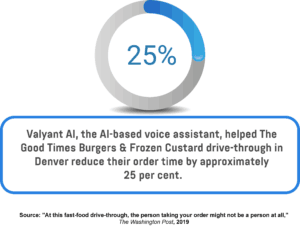
The AI is also beneficial to employees, as it allows them to focus on preparing food and processing payments, rather than having to repeat the same welcome message over and over again. “By freeing employees to spend more time focused on the customer at the window, we’re providing better and faster service to our customers and a more enjoyable experience for our employees,” says Scott Lefever, chief operating officer at Good Times. The system employs the human-in-the-loop (HITL) model, which ensures the highest possible accuracy and allows any potential issues to be caught in time. According to the company, they were able to reduce order time by approximately 25 per cent since the system was first introduced.
AI Bar uses facial recognition to let bartenders know who’s next in line
Isn’t it frustrating when you’ve been waiting to be served in a crowded bar and you notice the bartender serving someone else instead, even though they just walked in? Thanks to technology, that may soon become a thing of the past. The London-based AI firm DataSparQ recently launched a new software called AI Bar, which uses facial recognition technology to help bartenders determine which customers they need to serve next.
AI Bar uses a camera to record customers as they approach the bar and displays a live feed on the screen positioned above the bar. The software places a circle around each customer’s face, along with a number that signifies their place in the queue. It even shows the estimated amount of time they will have to wait for the bartender to get to them. The software is also capable of identifying customers who look underage and informs the staff whether their ID has already been checked. According to the company, AI bar can reduce the serving times by between three and five seconds per order. And better still, it reduces the number of arguments.
“Queuing is a part of British life that we all have to endure – but we wanted to do something to improve the experience,” says John Wyllie, Managing Director at DataSparQ. “The tech isn’t designed to replace bar staff, it’s there to help them become more efficient.” The company also plans to include additional features in the near future, such as allowing customers to repeat orders with simple hand signals, allowing certain customers to order drinks on the bar tab, and recognising intoxication levels in order to help avoid fights.
How will technology shape the future of bars and restaurants?
To reduce costs and improve efficiency, restaurants and bars around the world are increasingly turning to artificial intelligence and robotics technology. Whether they are being used to greet customers, take their orders, pour drinks, make coffee, or help bartenders determine who’s next in line, AI and robots are becoming a regular feature in the food and beverage industry. And as restaurant and bar owners become increasingly aware of the benefits these technologies bring, this trend is set to continue well into the future.
Not everyone is convinced this is a good idea, though. Many people are concerned that artificial intelligence and robots may take jobs away from human workers and lead to higher unemployment rates. The companies developing the technology disagree, however, claiming that these technologies are not meant to replace humans altogether but to make their jobs easier by taking on some of the more repetitive, boring tasks and allowing them to focus on more important things. We think there’s no stopping these developments, so don’t be surprised if you’re greeted by a robot or an AI next time you visit a bar or restaurant.
